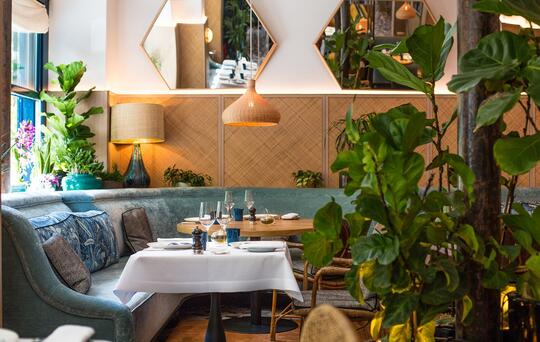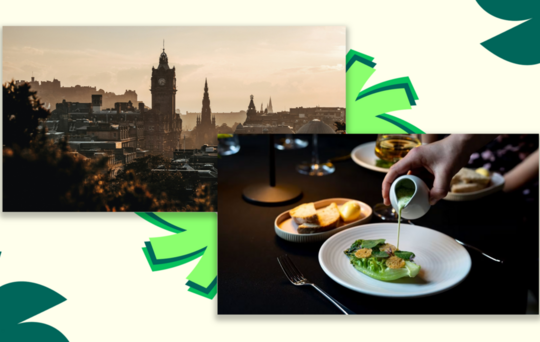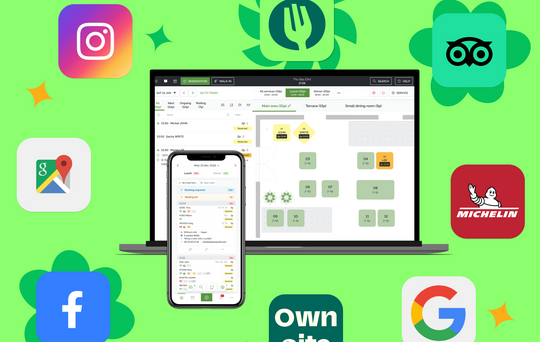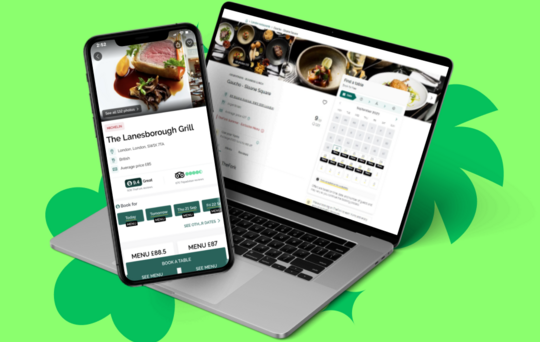Beyond Carbon: A New Definition for Sustainability in Restaurants
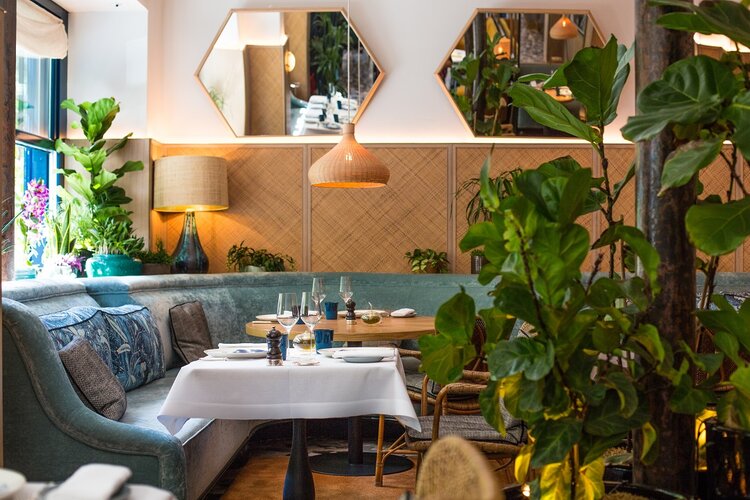
What does sustainability really mean when it comes to the hospitality industry? In this article, The Sustainable Restaurant Association explores why a holistic approach to sustainability is critical and how restaurants can build a better future for all of us. With advocates like TheFork leading the way in promoting more sustainable choices in dining, the opportunity to make a difference has never been clearer.
Our food system has a truly enormous environmental impact – affecting everything from the climate crisis and biodiversity loss to food waste, water scarcity and soil degradation. While other sectors like retail play a role, the hospitality industry is a major contributor. There’s no escaping the facts: we won’t meet our climate targets without changing how we cook, serve and eat our food and, for this to happen, we need hospitality businesses to lead the change. It’s time we overhaul the industry to make it environmentally and socially restorative, safeguarding our food systems for the future and building resilience into daily operations. This represents a responsibility for this influential industry – but also a golden opportunity.
Restaurants and chefs occupy a unique position between the food system and the food consumer, with the potential to drive positive change in both directions. Looking upstream through the supply chain, to farmers, fishers, growers, producers and suppliers, every order you place is a chance to vote for the type of food system you want to see in the world.
This influence is equally powerful when it comes to your customers. How we eat is not just a matter of personal preference, but is heavily guided by the food environment; in the moment, consumer choices are easily swayed by what’s available, what’s affordable and how it’s presented. In the longer term, chef-created food trends filter down to influence how we shop, cook and eat at home.
It’s time to take action and play your part in building a better food system – one that does good for both people and planet and will continue to support future generations. In this article, we explore how to go about this, what action on sustainability looks like for restaurants and the real business benefits of taking a consistent and holistic approach.
A holistic approach to sustainability
Sustainability is complex and it requires a comprehensive approach. Carbon footprints are important and are a fantastic place to start but, especially for F&B businesses, the work needs to include more than emissions, or even environmental metrics in general. Sustainability in hospitality is a much bigger story; moving beyond the carbon narrative to a holistic, 360-degree approach is a more meaningful way to have an impact. We need to build progressive, resilient businesses – with people at their centres – that can carry us safely and responsibly into the future.
So what does sustainability look like for a modern restaurant? Here are four key focus areas.
1. Reduce your environmental footprint
Environmental impact is usually the first thing that comes to mind when we think about sustainability. For restaurants, reducing Scope 3 emissions is particularly challenging, but absolutely necessary. Other highly effective ways to minimise your impact include switching to renewable energy, avoiding pollution of all forms and reducing water use in-house and throughout the supply chain. Embrace the principles of circularity, make food waste a thing of the past and work with suppliers to eliminate non-organic waste (especially plastics).
At Hawksmoor, Co-Founder Will Beckett feels strongly about food waste. “This is a really important issue in our industry – both ethical and financial. We pay to buy food, pay to store it and then pay to throw it away!” The Hawksmoor team prevents food waste in a variety of ways, including deliberately creating dishes from food that would otherwise be wasted; other items are used to make delicious staff meals. They also make the best possible use of data, weighing every scrap of waste and using this information to create specific reduction targets. Even small things add up: before they grate cheese over a Caesar salad, they place the bowl in a large tray. Any cheese that escapes onto the tray is used to make Caesar dressing. On a busy day, this can save 100g of cheese in a single restaurant!
Meanwhile, at Gaucho, they’ve implemented strong measures to cut food waste and energy use. This includes setting energy reduction targets, installing smart meters and linking food waste goals to KPIs and bonuses. They’re also mapping their water footprint to drive reductions and exploring more efficient technologies for restaurant refurbishments.
2. Start sourcing sustainably
How you choose to spend your procurement money matters. Responsible sourcing is a central way in which chefs can transform the food system, creating demand for better agricultural and fishing practices. Sourcing standards that support positive environmental and social impact are a tangible and practical vote for the sort of food system we need to create.
This includes cultivating a clean supply chain and eliminating human rights abuses throughout; ensuring fair compensation for producers; celebrating provenance in ingredients and on menus; and choosing high-welfare meat and fish that was caught or farmed using sustainable methods. Encourage healthy, sustainable diets by serving a greater proportion of plant-based meals – and by making these options irresistible.
At Lyle’s restaurant in London, the team prioritises working with small-scale farmers and fishers and often pay above market price to ensure they’re getting the best local ingredients. Chef and Owner James Lowe says it’s simple. “I care about making the food at Lyle’s interesting and really good to eat. I care about creating a great experience for the guests we have in the restaurant. To do that, you have to buy the best produce – and to buy the best produce, it has to come from people who really care about what they’re doing.”
Try TheFork now
3. Don’t forget about social sustainability
With so much urgency attached to environmental factors, the ‘S’ in ESG is too often forgotten, but it matters how F&B businesses treat the people in their network. From customers to staff, suppliers and stakeholders, everyone with whom your business interacts deserves respect, fairness and care.
For one thing, restaurants play an invaluable role within their communities, functioning as ‘third spaces’ where people come together, and helping to define culture on a local level. Engaging in the community is a really important part of what it means to be a sustainable restaurant.
Within the workplace itself, things like diversity and equity, work-life balance, zero tolerance for bullying and harassment and reasonable compensation must form part of any restaurant’s sustainability ambitions. Poor treatment of staff has been the dirty secret of hospitality for far too long; in an industry that is built on people and personality – and one that has such a massive impact on the economy – it is crucial that we define a new ‘normal’.
At Bibi, Chef-Patron Chet Sharma is passionate about treating staff well, and working hours, HR policies, training opportunities, diversity and culture are carefully considered. “Having a positive, consistent and engaged team is a restaurant’s biggest asset. By treating staff fairly, you can improve retention rates, save money on new starters, increase sales and reduce stress from being understaffed.”
Cinnamon Bazaar is another great example of how happy staff create a great dining experience. Executive Chef, Founder and CEO Vivek Singh says, “More than any other industry, hospitality is so dependent on people – without its people, it’s nothing. This extends to everyone: suppliers, teams or any other stakeholders. When they are well looked after, they are able to look after others well.” The Cinnamon Collection is particularly proud of their outstanding training and career progression programmes and their Employee Assistance programme, all of which have a direct, positive impact on retention.
4. Set targets, measure progress
For all your sustainability work, make sure to put measurable targets in place, track your progress and report it in a transparent way. Sustainability is a journey, not a destination; it’s about showing up consistently, putting one foot in front of the other and always aiming to be better tomorrow than we are today.
What are the bottom-line benefits?
Restaurants are incredibly busy and operating within a wider pressure cooker of a landscape; it’s easy for sustainability to get pushed to one side when everything else seems more urgent. However, there are some very real business benefits to doing this work, some of which have a direct positive effect on some of the most pressing issues operators are facing.
Doing this work in a transparent, honest and measurable way provides many customers with the peace of mind they want. This can improve brand reputation, attract more customers and build long-term loyalty. This goes for the people you employ, too:
studies repeatedly show that people want to work for businesses that take care of both people and the planet. Improving your sustainability credentials means easier recruitment and better retention, both ongoing problems since the pandemic.
While sustainability can, of course, require some investment, it also leads to some very real cost reductions. Reducing food waste and implementing better management of energy and water use will save you money, while smart, sustainable menu design can also mean better margins on dishes. Local sourcing will reduce the costs of transporting your ingredients while also cutting out the middleman, which often means better quality food at a lower price. In the longer term, you’ll also be futureproofing your business against increasingly stringent environmental legislation.
We’re at a critical point in the history of our planet, and how we act now will shape the world for generations to come. The hospitality industry has a significant part to play in driving this seismic shift, and we need businesses across the sector to embrace a holistic approach to sustainability to build a better food future for all of us.
We’re at a critical point in the history of our planet, and how we act now will shape the world for generations to come. The hospitality industry has a significant part to play in driving this seismic shift, and we need businesses across the sector to embrace a holistic approach to sustainability to build a better food future for all of us.
The Food Made Good Standard from The Sustainable Restaurant Association is the only global sustainability accreditation designed especially for hospitality businesses. And with platforms like TheFork empowering restaurants to showcase their sustainability efforts, embracing these practices becomes not just a responsibility but a competitive advantage.
Interested in learning more about Food Made Good? Check out www.thesra.org, follow The Sustainable Restaurant Association on Instagram and LinkedIn and sign up to their newsletter for regular news and insights from the world of sustainable hospitality!


